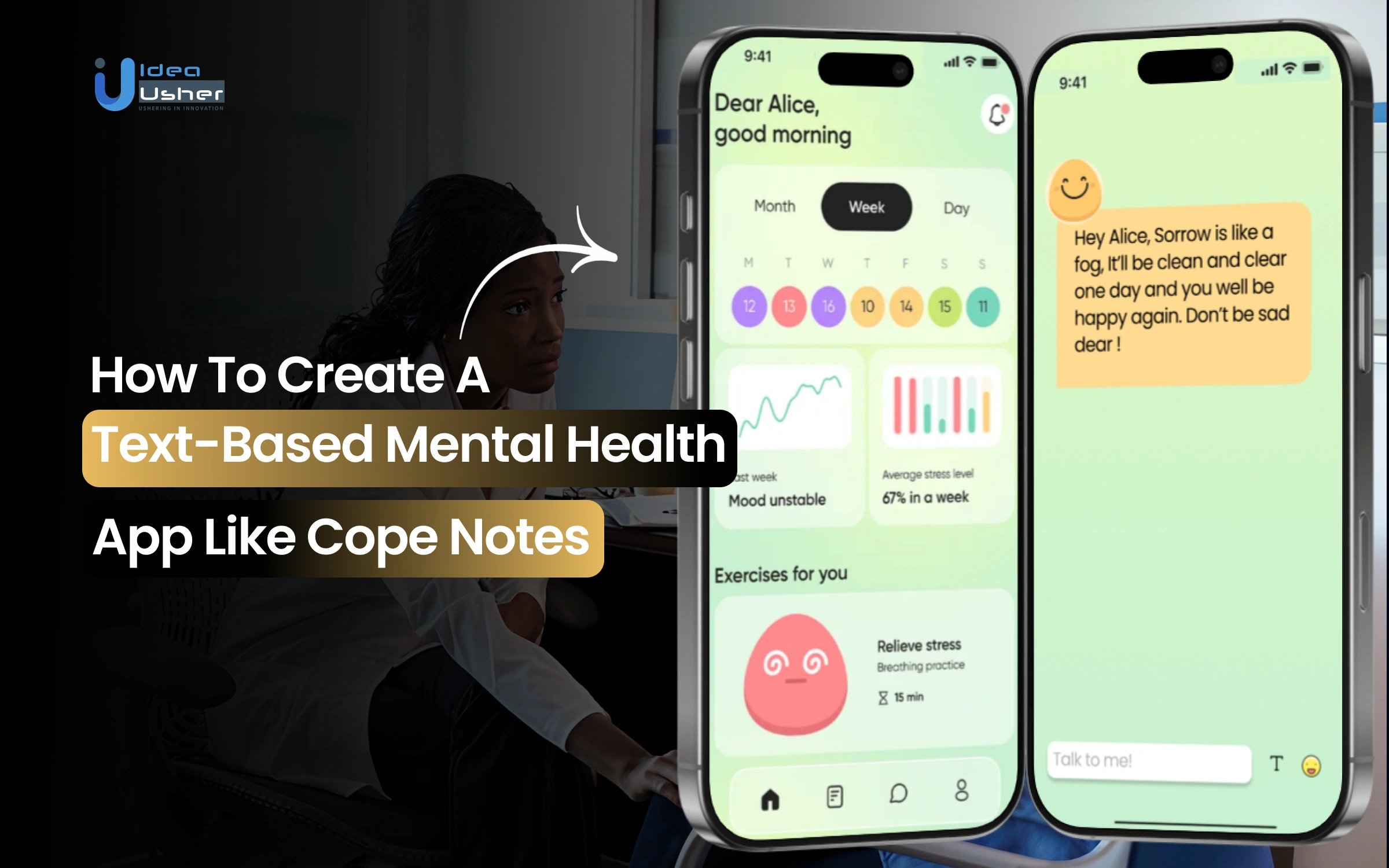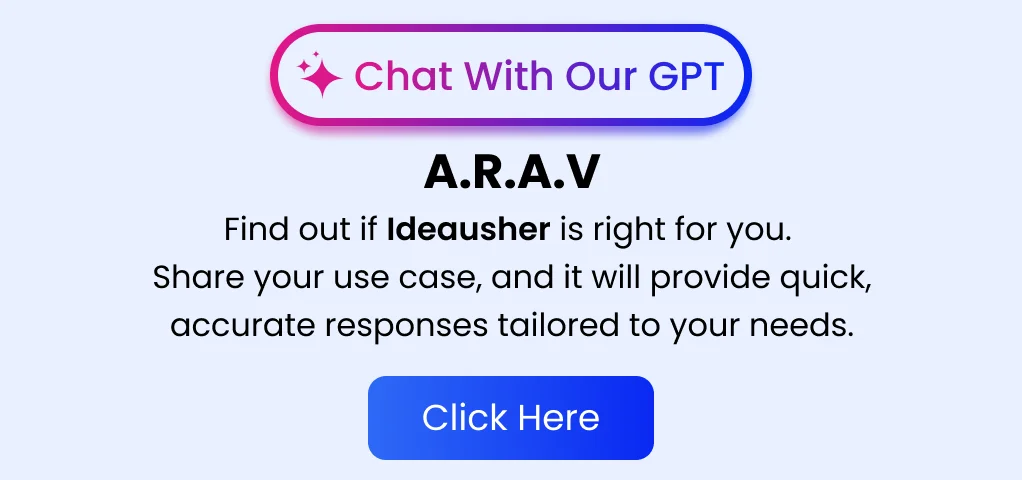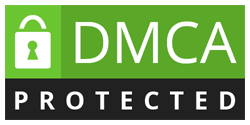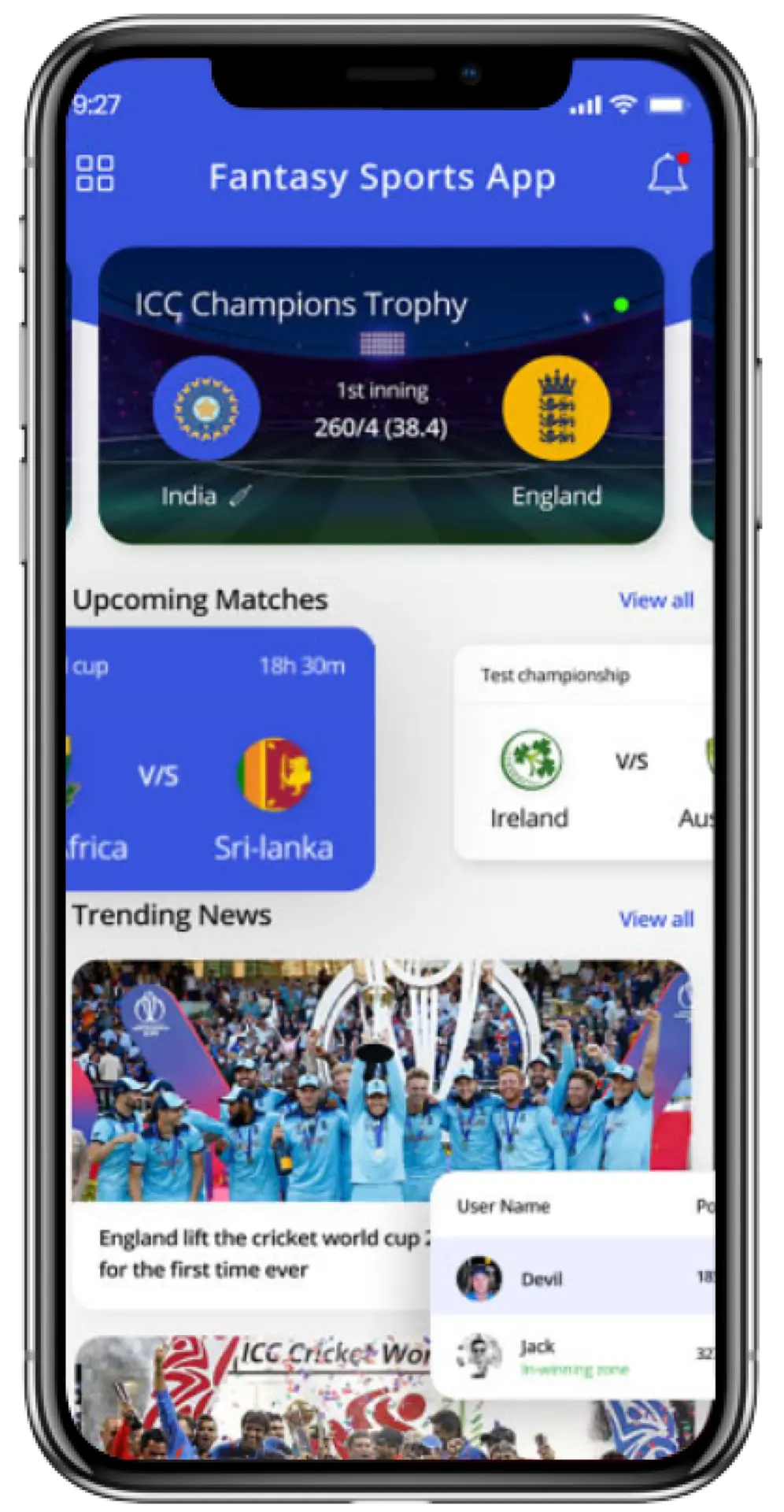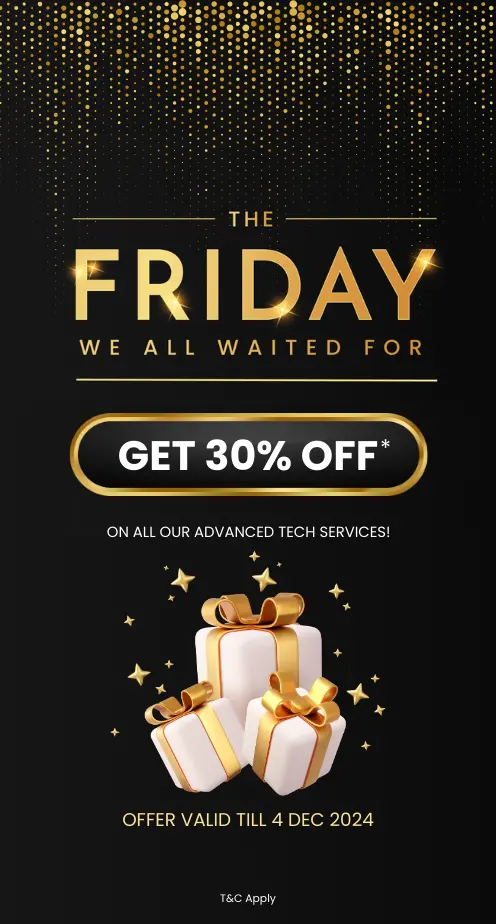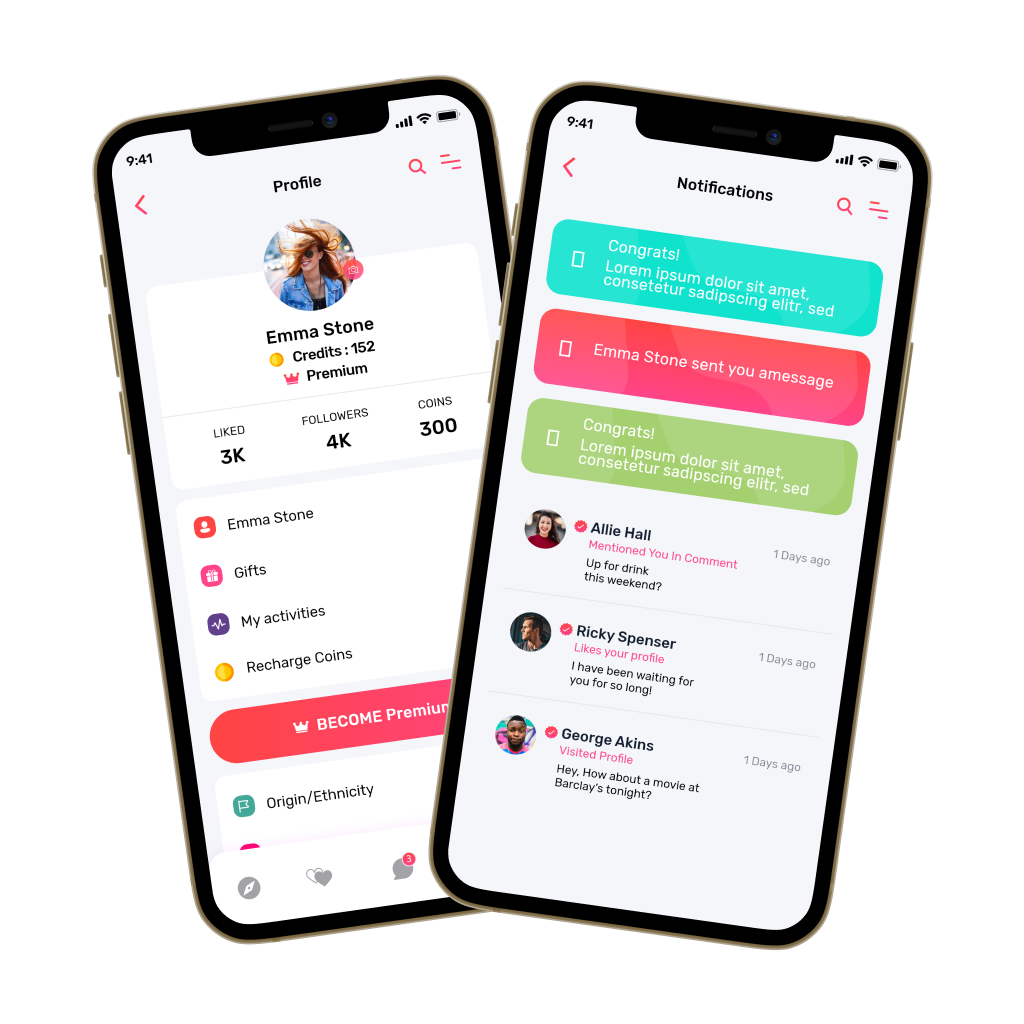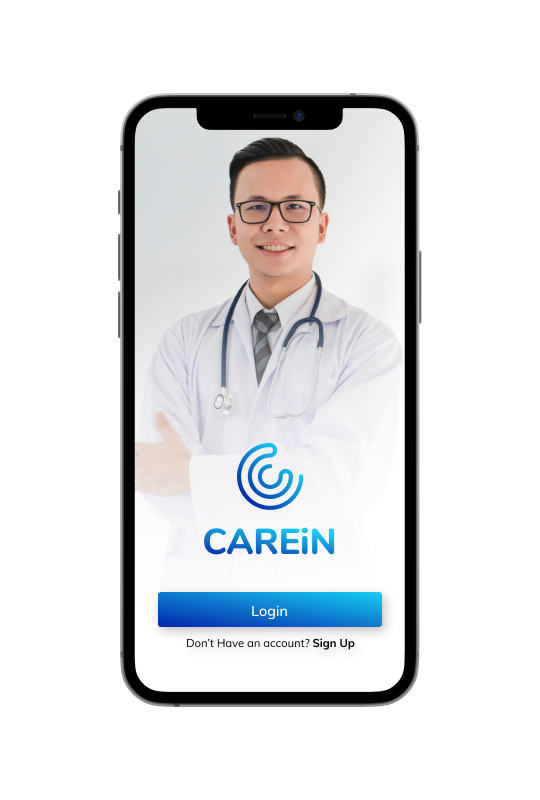In a world that’s always connected but still feels emotionally distant, mental health support can often seem just out of reach. Many people carry their struggles in silence, unsure of where to turn for help. That’s why a lot of them have started relying on text-based mental health apps like CopeNotes. These apps offer a discreet and personal way for users to get support. By sending uplifting messages, they help users feel comforted exactly when they need it. Users don’t have to wait for a therapy session or worry about judgment. These apps are available anytime, offering timely encouragement.
Launching a text-based mental health app presents a valuable opportunity for businesses to tap into this growing market and create new revenue streams. These platforms make emotional well-being more accessible to anyone, anywhere.
In this blog, we’ll explore how to create a text-based mental health app like Cope Notes, the technology that powers these interactions, and the meaningful impact such platforms can have on emotional well-being. IdeaUsher can apply its expertise in digital health solutions to help organizations develop text-based mental health apps that are engaging, responsive, and truly supportive for users.
Key Market Takeaways for Text-Based Mental Health Apps
According to SkyQuestt, the mental health app market is growing fast. In 2023, it’s valued at around 6.9 billion USD and is expected to grow even more in the coming years. This trend is driven by the increasing need for accessible mental health support and the widespread use of smartphones. As more people seek easy ways to manage their mental health, the market keeps expanding.

Source: SkyQuestt
Text-based mental health apps are becoming more popular because they offer users anonymity and convenience. These apps allow people to connect with licensed therapists or use AI-driven chatbots to get support right away.
They are especially helpful for those who might not feel comfortable with traditional therapy. The COVID-19 pandemic made these apps even more essential, with many people turning to them for help during tough times.
Apps like Wysa and Youper are great examples of how text-based platforms are making a difference. Wysa has over 5 million users and works with organizations like the NHS to provide support.
Sanvello also partnered with AbleTo to offer more virtual therapy and coaching options. These collaborations show how combining technology with expert support is making mental health care more accessible to everyone.
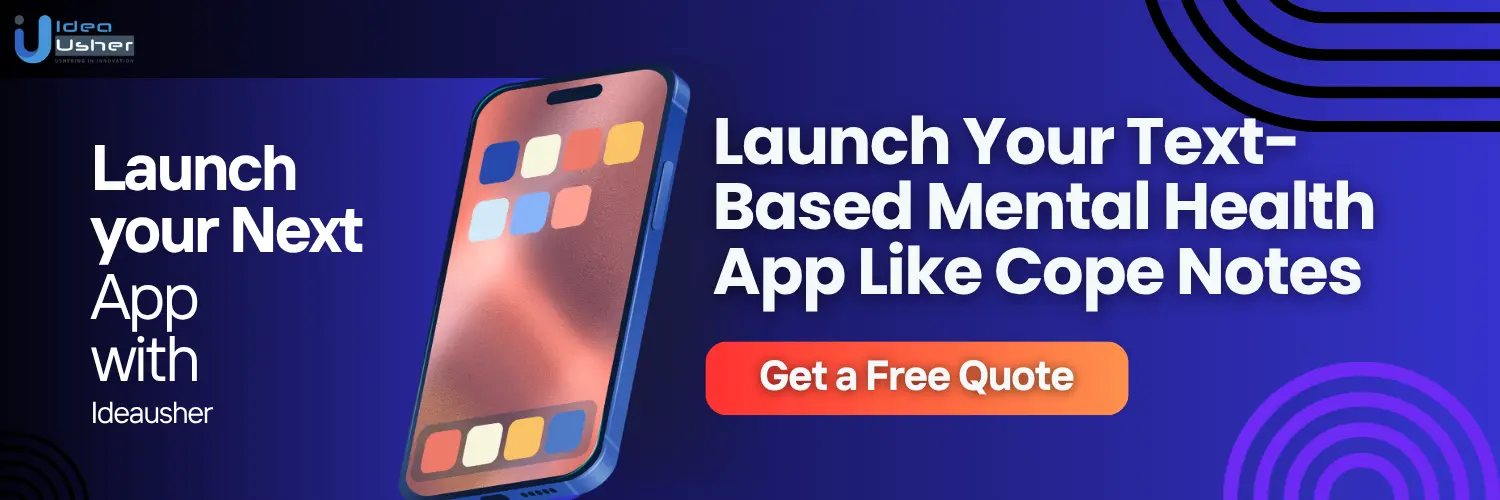
What is the Cope Notes App?
Cope Notes is a digital mental health support app designed to improve mental and emotional well-being. Unlike traditional therapy, it offers a full year of daily support for less than the cost of a single session. The app focuses on delivering relatable, peer-based support through positive psychology techniques, helping users better navigate their mental health.
Features That Make Cope Notes Stand Out:
- Peer-Based Support: The texts are sent by people who truly understand what it’s like to struggle with mental health. This real-life perspective helps users feel seen, heard, and connected.
- Positive Psychology: The app’s daily messages include exercises, tips, and prompts designed to boost mental health. Each message is reviewed by clinicians to ensure it’s not only positive but also effective.
- Digital Journaling: Cope Notes allows users to text freely at any time, offering a safe space to vent, complain, or just open up. It’s like a personal, digital journal that’s always there for you.
- Unique Messaging: No two subscribers receive the same message at the same time. This means that each user gets a personalized experience, tailored to their needs, keeping the support fresh and relevant.
- Randomized Timing: Texts arrive at unpredictable times, which is a deliberate strategy to interrupt negative thought patterns and offer support when it’s needed most.
- Privacy Protection: Cope Notes takes privacy seriously. The app ensures 100% anonymity and confidentiality, so users can feel safe knowing their personal information is fully protected.
How Does the Cope Notes App Work?
Cope Notes works by sending users a daily text message with a random supportive prompt. These messages help users reflect, practice mindfulness, or gain insights into their mental health. Users can reply to the texts, using them as a private journal to express themselves without judgment.

1. Simple Sign-Up
The process begins on their website where users can easily sign up without downloading anything. After choosing a subscription plan or starting a free trial, they just provide basic details like their mobile number. The service then runs entirely through SMS, so it’s accessible to users even without a smartphone or internet.
2. A Random Daily Text
Once users are signed up, Cope Notes sends them a text message once a day, at a random time during waking hours. This randomness is deliberate. It’s called an Ecological Momentary Intervention which is a psychological strategy that delivers support during unexpected moments, helping users break out of negative thought cycles or offering a brief moment of mindfulness during a busy day.
The text content varies, with messages that could include:
- A thought-provoking question like, “What’s one small thing you can do today that your future self will thank you for?“
- A positive psychology exercise, such as, “Name three things you can see, two things you can touch, and one thing you can hear. Take a deep breath.”
- A short, encouraging message written by someone who’s had similar mental health challenges.
- A psychology fact to help users better understand their mind.
The key here is that no two users receive the same message at the same time. Each subscriber gets a personalized sequence, making it feel tailored to their unique needs.
3. A Safe, Private Journal
The interaction becomes more personal when users reply to the daily message. Cope Notes follows a “no-reply” policy, meaning they won’t respond to users’ texts. Instead, these replies serve as a private journal where users can safely express their thoughts without fear of judgment or anxiety.
4. Behind the Scenes
The experience may seem simple but it’s backed by a sophisticated system. The messages users receive are written by people with real mental health experience and are reviewed by licensed professionals. This ensures the content is both authentic and psychologically sound for users.
Cope Notes is designed to be proactive, not reactive. Instead of waiting for users to reach a crisis point, the service works daily to build resilience and healthier thought patterns, much like taking a daily mental health “vitamin.” It’s about actively training the brain to think and respond differently, helping users develop long-term mental wellness.
What is the Business Model of the Cope Notes App?
Cope Notes uses a subscription-based model to offer daily mental health support via text messages. It combines peer support, positive psychology, and journaling, making it a simple and affordable option for individuals and organizations. Here’s an overview of the company’s business model and revenue streams:
Individual Subscriptions
The primary revenue source comes from individual users who subscribe to receive daily supportive text messages. These messages help interrupt negative thoughts and encourage mental well-being through personalized, peer-written content.
Institutional Packages
Cope Notes also sells bulk subscriptions to organizations. Universities, businesses, hospitals, and public schools can purchase packages for their employees, students, or community members. These institutional packages range from $5,000 to millions of dollars, depending on the number of users and support needed.
Government-Funded Programs
Cope Notes qualifies for funding through the CARES Act, allowing the company to offer a $9.99 per user per month pricing model via federal aid programs. This government-backed pricing model supports local governments and organizations in expanding mental health services.
Financial Performance
While exact figures for Cope Notes’ recent financial performance are not publicly available (as it is a private company), the service has gained significant traction.
- By early 2025, the platform had delivered over 4 million mental health text interventions across 97 countries. This rapid growth reflects the increasing demand for accessible, affordable mental health support in various sectors.
- The company operates with low overhead, thanks to its unique text-based model. Unlike traditional therapy or counseling apps, Cope Notes doesn’t require expensive infrastructure like video calls or in-person meetings.
This efficiency enables the company to offer its services at a relatively low cost while maintaining healthy margins.
Operational Model
Cope Notes runs on a lean operational model with a small team based in Tampa, Florida. The company employs between 2 to 10 people, which further highlights its efficient, streamlined operations. With minimal overhead and a clear focus on delivering valuable mental health support, Cope Notes is able to maintain its impact while keeping costs low.

Other Ways to Monetize a Text-Based Mental Health App
While the direct-to-consumer subscription model, as used by Cope Notes, is a proven and effective revenue stream, it’s not the only path to sustainability and growth. Diversifying your monetization strategy can unlock new markets, create additional value, and build a more resilient business.
Here are some powerful alternative monetization models for a text-based mental health app,
1. Freemium Model
The freemium model is a popular strategy for acquiring users by offering free access to core features while providing a paid version with advanced functionality.
How It Works:
- Free tier: Daily text prompts for mental health support (the core Cope Notes functionality).
- Paid tier: Unlocks features such as personalized mental health journeys (e.g., anxiety management, resilience building), in-depth mood analytics, extended journaling prompts, and the option to purchase specific toolkits (e.g., “Coping with Social Anxiety” for $4.99).
For example, Woebot offers a free chatbot service, with paid programs available for specific mental health challenges like postpartum depression or health anxiety. Users are drawn in by the free content, and the paid upgrades provide a smooth transition to premium services.
Revenue Potential
In-app purchases typically range from $1.99 for small toolkits to $9.99-$19.99 for monthly programs. If 5% of a user base of 100,000 free users convert to the premium tier, and each pays $10/month:
- 100,000 free users * 5% = 5,000 premium users
- 5,000 users * $10/month = $50,000/month in recurring revenue.
The revenue can be much higher with continued user engagement, upselling additional features, and toolkits.
2. Pay-Per-Session Therapy Services
This model turns your app into a pathway to professional mental health support, offering users access to licensed therapists, counselors, or coaches.
How It Works:
- Core service: Daily text-based prompts and mental health support.
- Premium offering: Users can book text, voice, or video therapy sessions with licensed professionals directly through the app. This creates an additional revenue stream as users upgrade from the basic support to a full therapy experience.
For example, Talkspace and BetterHelp are leaders in online therapy, combining messaging with licensed professionals, as well as live sessions. Your app could integrate a similar hybrid approach, using text-based mental health support as a lead-in for those seeking professional intervention.
Revenue Potential
Therapy sessions typically range from $40 to $100+ per 45-60 minute session. The platform typically takes a 20-40% commissio If 1,000 users book an average of one $60 session per month, with a 30% platform commission:
- 1,000 sessions * $60/session = $60,000 in gross revenue
- Platform’s 30% commission = 30% * $60,000 = $18,000/month.
If the platform scales further or offers multiple sessions per user, revenue can grow significantly.
3. Ethical Advertising and Sponsored Content
While advertising in a mental health app can be tricky, thoughtful, non-intrusive sponsored content or partnerships can serve as a supplemental revenue source.
How It Works
Partner with relevant, reputable brands (e.g., wellness, mental health, educational) to deliver sponsored content that adds value to users. This could include wellness tips, curated journaling prompts, or stress-relief techniques. The key is to ensure the content aligns with your app’s mission and is not intrusive.
Revenue Potential
Sponsored content typically generates $0.01 to $0.20 per daily active user (DAU). With 100,000 daily active users and an average of $0.10 per DAU:
- 100,000 DAU * $0.10 = $10,000/day.
- Monthly revenue from ads would be $10,000 * 30 days = $300,000/month.
This is a significant amount, but it depends heavily on user engagement and the effectiveness of ads.
How to Develop a Text-Based Mental Health App Like Cope Notes?
Over the years, we have built several mental health apps similar to Cope Notes for our clients, helping them make a real difference in people’s lives. Our goal is to guide you through the process of building an app that genuinely supports mental well-being. Here’s how we go about developing these apps for our clients.
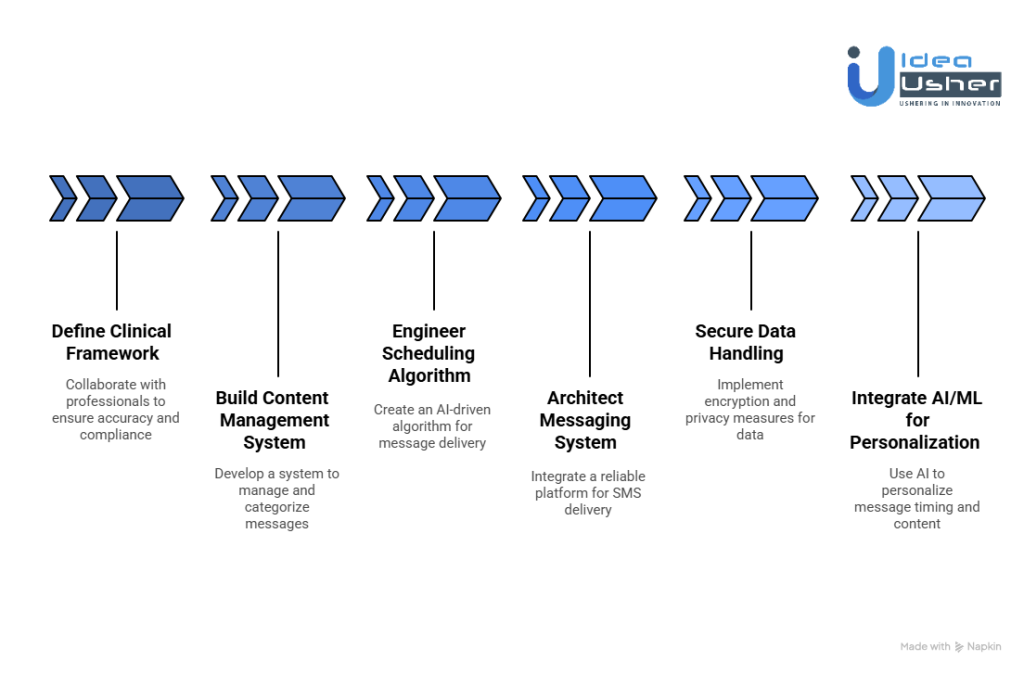
1. Define Clinical Framework
We start by collaborating with mental health professionals to ensure that the app’s content is accurate and useful. It’s important to clarify that the app is not meant to replace therapy or crisis services, and we make sure this is clearly stated. We also work on building user consent and privacy policies right from the beginning to comply with laws like HIPAA, GDPR, and CCPA.
2. Build Content Management System
Next, we focus on developing a content management system that houses thousands of messages. Each message is categorized by tone, topic, and psychological principle to ensure they are relevant and effective. We also integrate both peer-written and clinically reviewed content to guarantee that the information users receive is both valuable and reliable.
3. Engineer Scheduling Algorithm
We then create an AI-driven scheduling algorithm that sends messages at random intervals. The goal is to avoid predictable patterns, making the experience feel more natural. The system ensures that messages aren’t sent during sleep hours and prevents sending duplicate or too many messages in a short period. We also make sure it supports different time zones to cater to users’ personal schedules.
6. Architect Messaging System
We integrate a reliable messaging platform like Twilio or Nexmo to handle SMS delivery. This ensures that messages are sent on time and comply with necessary regulations. We also include retry mechanisms to handle any delivery failures and make adjustments to message sending speeds as needed to avoid overloading the system.
7. Secure Data Handling
We take security seriously, storing user replies as encrypted, de-identified data to protect privacy. There’s no human review of this data, ensuring complete anonymity. To maintain this confidentiality, we set up one-way journaling systems and use end-to-end encryption, secure cloud environments, and BAA agreements to ensure everything stays secure and compliant.
8. Integrate AI/ML for Personalization
We use AI and machine learning to personalize the experience by adjusting message timing based on user engagement. We also apply NLP models to understand mood patterns, allowing the app to respond to users’ emotional needs. Throughout this, we make sure the communication remains one-directional, respecting compliance boundaries and avoiding chatbot interactions.
Common Challenges a Text-Based Mental Health App
Launching a text-based mental health app comes with its unique set of challenges. After working with numerous clients in this space, we’ve pinpointed the most common obstacles and developed proven strategies to overcome them. Here’s how to navigate each one:
1. The Logistical Nightmare
Coordinating timely messages for a global user base is complex. Users across different time zones need messages at appropriate times to avoid disruptions, which can negatively impact the user experience.
Our Proven Solution: We use serverless platforms like AWS Lambda or Google Cloud Functions to manage scaling needs without the hassle of server maintenance. Our smart scheduling engine accounts for time zones and user-defined “quiet hours,” ensuring messages are sent during acceptable times.
2. The Legal Minefield
When dealing with mental health data, you must follow strict regulations like HIPAA and GDPR. If you don’t, you could face heavy penalties and lose users’ trust. It’s essential to get compliance right from the start to avoid these risks.
Our Proven Solution: We ensure compliance by connecting you with HIPAA/GDPR consultants to design your app’s architecture correctly. We use HIPAA-compliant cloud services and implement end-to-end encryption to secure user data, making sure it stays protected at all stages.
3. The Engagement Puzzle
Over time, users might lose interest if the content stays the same. You need to keep things fresh and engaging to keep them coming back. Otherwise, you could see more people unsubscribing.
Our Proven Solution: We build a dynamic CMS that lets your team update content easily. Additionally, we implement data-driven personalization, ensuring messages are relevant and tailored to users, helping keep the experience fresh and engaging.
4. The Credibility Gap
In a crowded wellness app market, trust is key. Users need to know that professionals are behind your app and its content. Without clinical credibility, you may struggle to stand out.
Our Proven Solution: We help you partner with licensed psychologists and researchers to guide content creation. Additionally, we facilitate evidence-based validation through peer-reviewed studies, boosting your app’s trustworthiness and standing out in the market.

Tech Stack Needed for Text-Based Mental Health App
Building a mental health app like Cope Notes takes more than good intentions. It requires a secure and scalable tech stack that ensures reliability and protects user data. The right tools and frameworks can help create a seamless, trustworthy experience for users while keeping their privacy intact.

1. Messaging and Delivery
The ability to send reliable and timely messages is the core of your service. Whether through SMS or push notifications, ensuring your messages reach users when they need them is non-negotiable.
- Twilio or Plivo: These platforms manage telecom relationships, ensuring high delivery rates globally. Twilio is known for its ease of use, while Plivo is cost-effective for high-volume needs.
- Firebase Cloud Messaging: For a mobile app, FCM allows you to send push notifications to both iOS and Android, enriching engagement with multimedia content.
2. Backend & Database
The backend is where everything comes together, scheduling messages, managing users, and ensuring the right messages are sent at the right time. It’s the tech that powers the entire app.
- AWS Lambda / Google Cloud Functions: Serverless functions help send daily messages without running a server 24/7. You only pay for the compute time used.
- MongoDB / PostgreSQL: PostgreSQL is perfect for structured data and relationships, while MongoDB offers flexibility for storing user-generated content, like journal entries.
3. Security & Compliance
When handling sensitive mental health data, security is essential, not just a feature. Tools like AWS HIPAA Compliance Toolkit and Google Cloud Healthcare API help ensure your app stays compliant with HIPAA, offering encryption and key management. Using platforms like Okta or Auth0 for secure login and multi-factor authentication will further protect user accounts from unauthorized access.
4. AI & Analytics
As your app matures, you’ll want to move beyond simple message delivery and toward personalized, intelligent support.
- TensorFlow Lite / PyTorch: These machine learning frameworks analyze user engagement patterns to personalize message delivery and improve mental health support.
- Mixpanel / Google Analytics: Track user behavior, response rates, and retention to make data-driven decisions for improving the app’s performance and user engagement.
5. Frontend: The User’s Window (If Applicable)
Even if your service is SMS-based, having a website or app for sign-ups and account management is important. If you choose to build a mobile app, React Native and Flutter are excellent options for cross-platform development. They let you write code once and deploy it to both iOS and Android, which can save you time and reduce costs.
Conclusion
Text-based mental health support has evolved significantly, shifting from simple self-help tools to sophisticated systems that proactively engage users in managing their mental well-being. The success of these platforms lies in integrating psychological principles with strong compliance frameworks and innovative technology. By combining these elements, developers can create accessible, effective solutions that truly support users’ mental health. At Idea Usher, we specialize in helping businesses and enterprises design, develop, and deploy secure, scalable text-based mental health platforms.
Looking to Develop a Text-Based Mental Health App?
At Idea Usher, we create spaces that truly support users’ well-being. With over 500,000 hours of coding experience and a team of experts from ex-MAANG/FAANG companies, we can bring your vision to life in a secure, engaging, and thoughtful way. Let us help you make a real impact on mental health with a platform that users will trust and value.
- Personalized & Empathetic Journeys: We’ll help you design AI-driven content systems that connect with users, delivering the right message at the right moment.
Privacy by Design: Trust is essential in mental health, so we prioritize security and ensure HIPAA/GDPR compliance from the ground up.
Engaging & Sticky Experiences: Our focus is on creating intuitive interfaces that users enjoy, encouraging them to return and build lasting healthy habits.
Ready to make a meaningful impact on mental wellness?
Explore our latest projects and discover the innovative solutions we can bring to your app. Let’s build something that matters.
Work with Ex-MAANG developers to build next-gen apps schedule your consultation now
FAQs
A1: A text-based mental health app is typically not considered a therapy app unless it is operated by licensed professionals. These apps are generally categorized as self-help tools that offer behavioral support, coping strategies, and mental wellness tips. They are designed to assist users with managing their mental health but do not replace the expertise and personalized care provided by a licensed therapist.
A2: You can monetize your text-based mental health app by offering subscriptions for users to access premium features or content. Another revenue stream could be enterprise licensing, where you partner with companies or healthcare providers to offer the app as part of employee well-being programs. Collaborating with other organizations in the mental health or wellness space can also open doors to mutually beneficial partnerships and sponsorships.
A3: Yes, if your text-based mental health app collects, stores, or processes personal health information from users in the U.S., it must comply with the Health Insurance Portability and Accountability Act. HIPAA ensures that sensitive health data is protected, so if your app handles any such information, you’ll need to implement appropriate safeguards to meet these legal requirements.
A4: Yes, you can incorporate AI chat features in your app, such as personalizing the timing or tone of messages based on the user’s preferences or needs. However, it is important to avoid having AI simulate real therapy conversations. This ensures that the app does not mislead users or replace the valuable expertise of licensed professionals, while still providing a supportive, engaging experience.
